Hello, brain health ambassadors! I am writing to you from Rome where I have been getting things ready for next week’s Brain Health Retreat in Puglia. I am beyond excited to be meeting some BHK subscribers in real life as we tour around “the heel of the boot”. While in Rome, I have been busy racking up steps (my step count in Italy is about double what it is at home!), visiting friends, and, of course, eating as many artichokes as possible. Yesterday I took a train to a small town outside the city for a day of truffle hunting. (Truffles are an especially brain-healthy fungi!). I’ll share more about that soon, but today we are talking about tea.
Would you like to join me on a Brain Health Retreat in Italy this fall? Learn more here and at the links below. Email me if you have questions!
The last few posts have been diving into the importance of polyphenols in a brain-healthy diet. The Green MED diet study showed how this approach protects brain volume with age. In this newsletter, I went into how to boost polyphenols in real life.
Tea is one of those foods that can be exceedingly good for you, flooding your brain with robust doses of polyphenols. In fact, most studies support tea-drinking as a habit that may help reduce dementia risk. On the flip side, tea can fall low on the polyphenol scale, be laden with sugar and non-nutritive sweeteners, and a plethora of added chemicals. I’ll get into all that, below, but first let’s understand the difference between “real tea” and “tea.”
The first newsletter of the month is free. Feel free to share! Please consider becoming a paying or founding member subscriber for full access to all the articles, recipes, food and product guides, and retreat announcements I share. Plus, founding members join me 4 times a year for live cooking class/kithen chats.
All real tea comes from the same plant

While it can mean many things to say you are having a cup of tea, “real tea” is the kind that comes from a specific plant: Camellia sinensis. There are 6 general varieties of real tea, all of which come from the same plant: white, yellow, green, oolong, black, and dark. But C. sinensis is highly malleable—different growing, harvesting, and fermentation techniques are what make each tea unique. Fermentation, for example, determines the flavor profile, the caffeine level, and how much of the polyphenol content makes it to your cup. When I refer to tea here, I am talking about “real tea” derived from C. sinensis.
How is tea different from herbal tea?
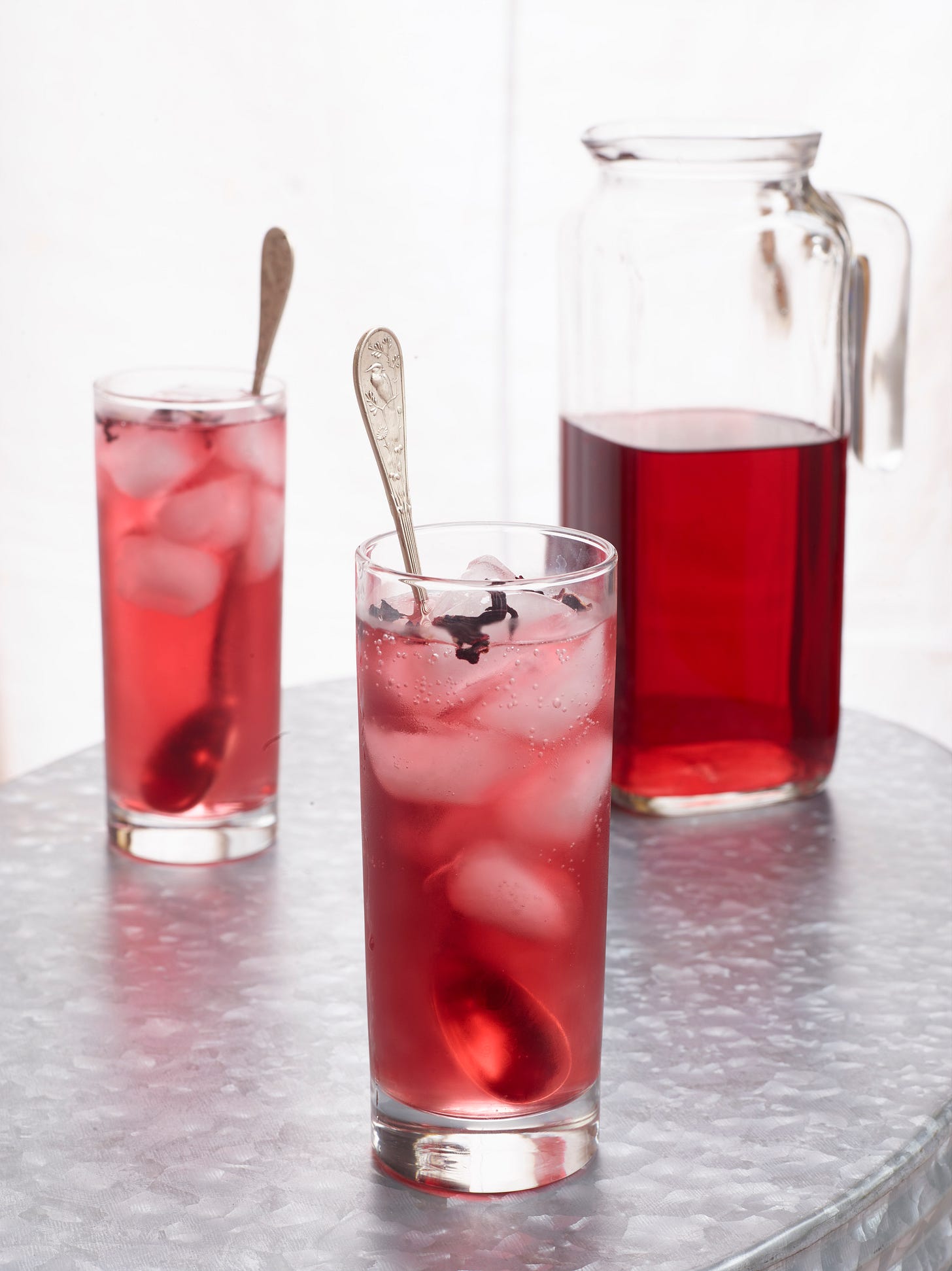
Herbal teas aren’t exactly teas (since they’re not made with C. sinensis), but instead are infusions made by steeping flowers, herbs, spices, and/or fruit in water. Any plant can be turned into an herbal tea. Its brain health virtue comes from being able to hydrate on par with plain water plus offering whatever phytonutrients come from that particular plant. Hibiscus flowers, for example, make a bittersweet infusion that can lower blood pressure to the same degree as medication. Chamomile tea, made from flowers, is thought to have calming properties, making it a good choice for drinking before bed. Other teas made from plants with brain health nutrients include peppermint, rooibos, passionflower, ginger, and sage.
Drinking tea: a habit that may reduce dementia risk
Until recently, researchers have found it challenging to study tea’s impact on how the brain ages. Just like with drinking alcohol and coffee, there are many confounding variables. With tea, the healthy user bias is strong—people with other healthful habits also happen to drink tea. Coffee drinking has been extensively studied for its impact on brain health (overall a very good thing to drink!). But there just haven’t been enough high quality tea-drinking studies to solidly recommend it to protect cognitive health. Until now.
Thanks to a recent meta-analysis and a tea-drinking cohort of the U.K. Biobank study, we have solid data to say how drinking tea impacts brain health with age, corrected for confounding variables.
In this meta-analysis of 17 observational studies including over 14,000 participants, researchers found the more cups of tea consumed, the lower the risk of dementia or stroke. This was statistically significant with green tea but not black or oolong tea.
This 2021 U.K. study with over 13,000 people looked at if drinking both coffee and tea (green and black) had a more powerful impact on brain health than either alone. They found that drinking 2 to 3 cups of coffee per day reduced dementia risk to the same degree as drinking 3 to 5 cups of tea per day. Those who drank both (a combination of intake totalling 4 to 6 cups per day) had the best outcomes: a 32% lower risk of stroke and a 28% lower risk of dementia. The combo with the lowest dementia risk: 0.5 to 1 cup of coffee and 4 or more cups of tea.
This 2022 analysis from the U.K. Biobank study looked at mortality rates in 500,000 people as it relates to their tea-drinking habits over 11.2 years. Black tea was the most common type consumed in this population. Drinking more than 2 cups of tea per day was modestly associated with a lower risk of dying from any cause, and specifically from cardiovascular disease and stroke. Adding milk or sugar to the tea didn’t seem to matter in this study—participants still had lower death rates.
Isn’t that a lot of caffeine?
You are probably wondering how to drink dementia-preventing amounts of tea without overdosing on caffeine. While everyone is unique in their ability to metabolize caffeine (based on a genetic trait), as long as you are not pregnant it is considered safe to consume up to 400 milligrams (mg) /day. That’s the amount in 4 to 6 cups of coffee. Here’s how the caffeine in tea stacks up against coffee:
Tea varies tremendously in caffeine content depending on how it is cultivated, brewed, and how fresh it is. In general, matcha green tea has less caffeine than coffee but more than regular green tea. All types of green tea contain L-theanine, an amino acid that enhances the slow absorption of the caffeine. This may be why people who are sensitive to caffeine find green tea to be a more gentle stimulant.
In the coffee world, the studies mostly suggest that choosing decaffeinated coffee does not deter from its health benefits. In the tea world, however, it’s not clear. The process of removing caffeine from green tea, for example, may take out a good portion of its polyphenols, too.
What you put in your tea matters
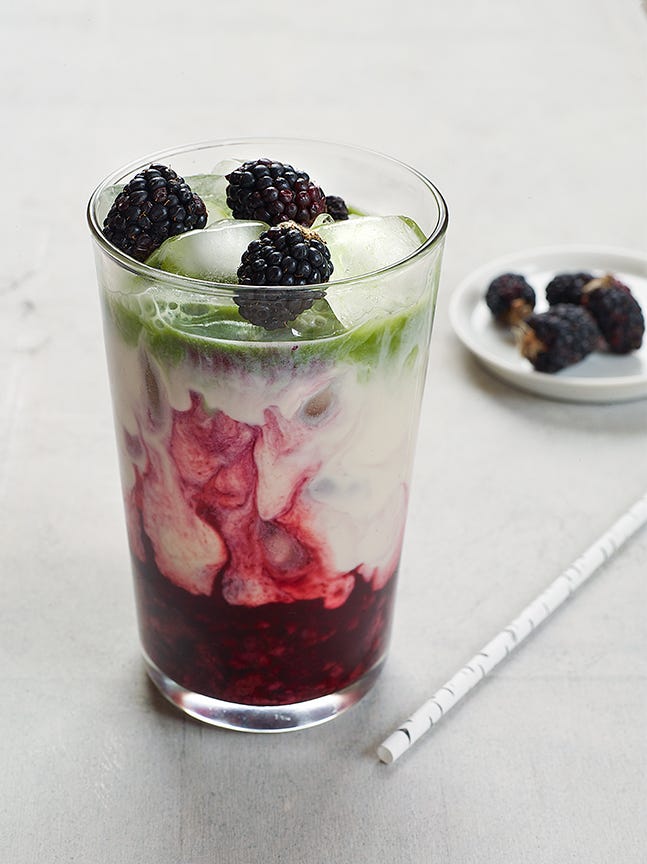
The issue of whether dairy protein binds to polyphenols is hotly debated. Some studies show that adding milk or cream to tea (and coffee) reduces its health potential by making the polyphenols less absorbable. Other studies (mostly in animals) show that dairy may actually enhance the absorption of polyphenols. Further research is needed, but for now I recommend avoiding adding dairy products to your tea. And, as we discussed during the metabolic health mini-series last month, it is certainly best to avoid added sugar and most non-nutritive sweeteners. If you enjoy drinking matcha as a latte, choose unsweetened plant milks, such as cashew, almond, oat, or soy milk.
The Takeaways:
Drinking tea has been identified as a habit that may reduce the risk of dementia, stroke, or dying from cardiovascular disease.
In general, coffee seems to have a more potent dementia-reducing risk at a lower level of intake.
There may be additional dementia risk reduction if one consumes both coffee and tea daily.
Decaf coffee seems to have the same health benefits as regular coffee but this may not hold true for tea. In general, tea has about one-third the caffeine as coffee. Everyone metabolizes caffeine at a different rate so these guidelines should be individualized.
Adding dairy products, sugar, and non-nutritive sweeteners to coffee and tea may interfere with the absorption of their brain-healthy polyphenols.
In an upcoming post I’ll go into how to buy, and brew tea to get not only the most enjoyable cup, but the one with the most brain-boosting polyphenols. Then there is the issue of anti-nutrients: do the tannins in tea keep you from absorbing the nutrients in food? We will discuss.
Next up: I have been working on creating a new guide for you all—the BHK Food Guidelines in a handy checklist format. You will be able to download it to your phone and refer to it while out grocery shopping. Or, print and place on the refrigerator for a visual reminder of the brain-healthy food groups. Look for it in the next post.
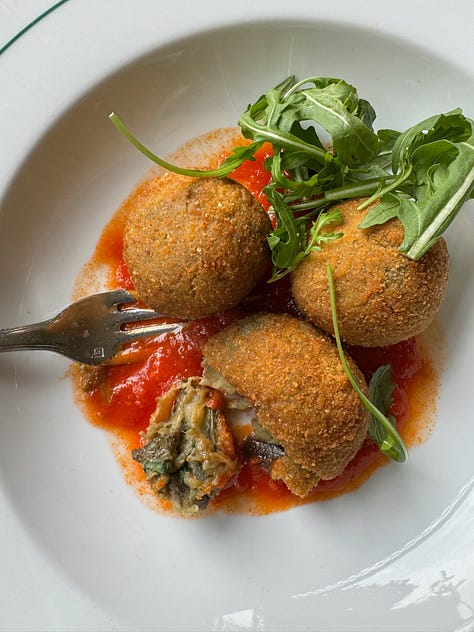
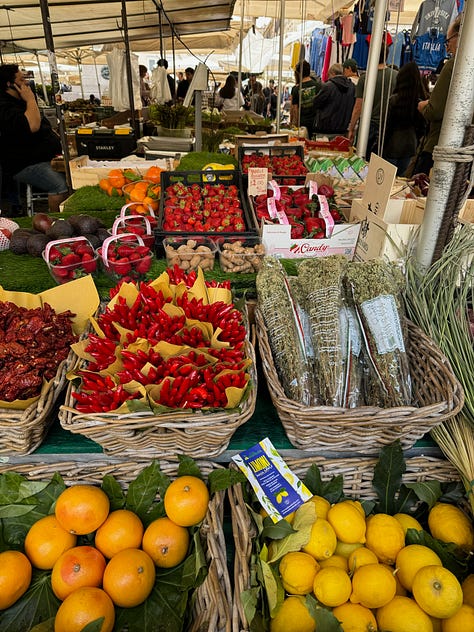
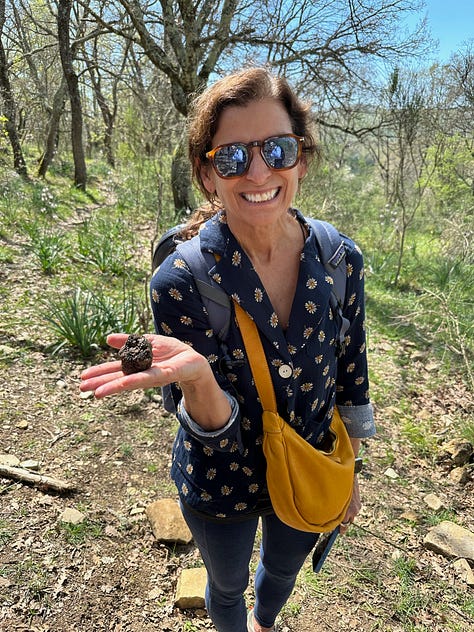
Thank you, everyone, for reading, sharing, and taking the best care of your brains. I am grateful to have you all as part of this food-loving, brain-healthy community. Ciao for now!
Love,
Annie

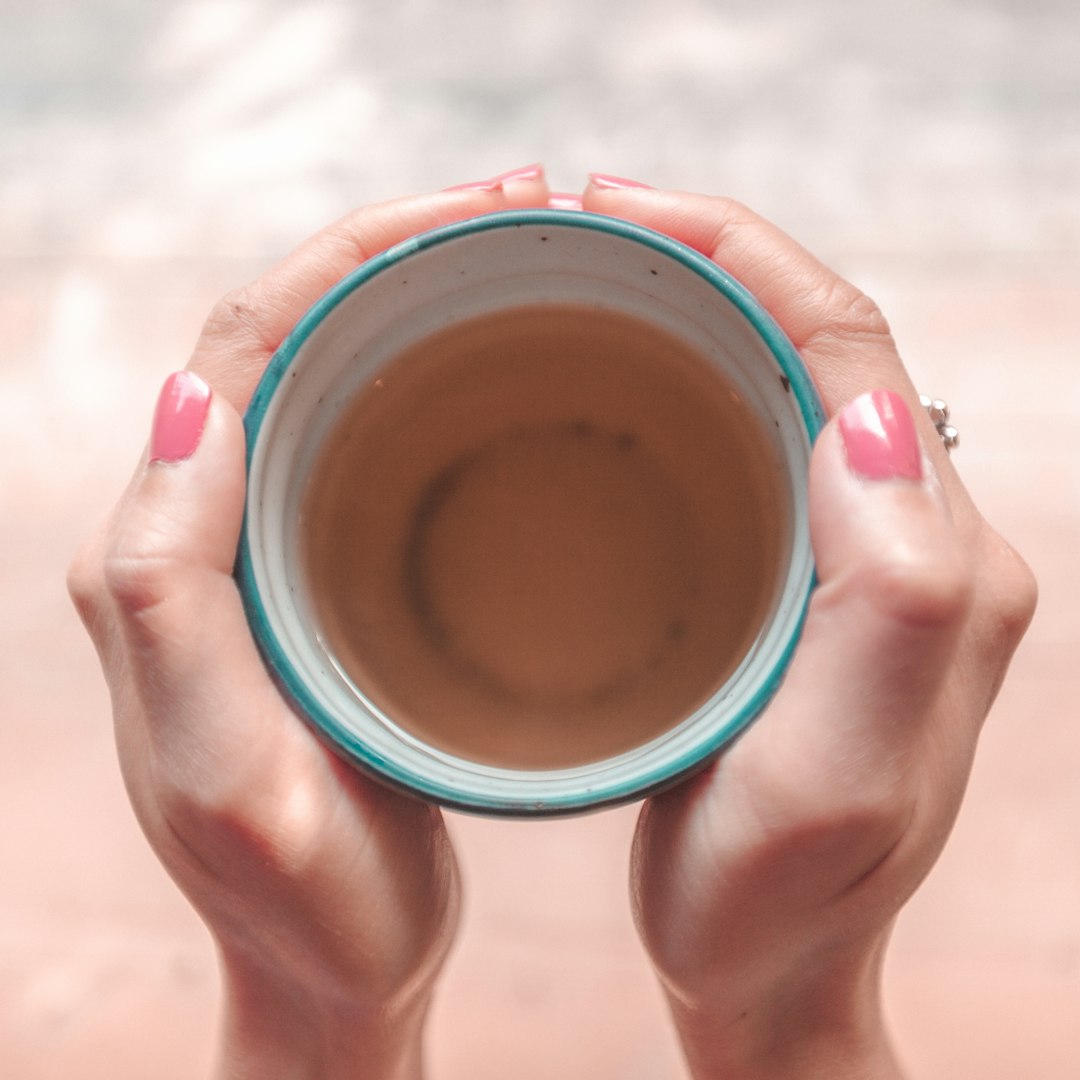





Thank you for the information! Instead of honey, today I added some peppermint leaves to my green tea in the pot to enhance the flavor without sweeteners. Tastes great! Enjoy Italy!
Hi, Dr. Fenn! I am a tea sommelier located in Dallas, Texas and I am so happy to see this email this morning!! I own a tea shop in town, and I’m always pushing c. sinensis on everyone I know!!! Beyond the brain, the health benefits of tea exceed expectations. The excellent thing about tea is that there are so many flavor profiles. If you haven’t found the right one or if you hate “hot brown water”, there is much to be explored. You mentioned green tea in your article. I have always thought it grassy and vegetal - strongly disliked - but, again, health benefits are through the roof. If you add fresh lemon to the beverage, it completely changes what happens in your mouth! Makes it more palatable and increases your antioxidants. Anyway, this made me so happy this morning!! Thanks!!